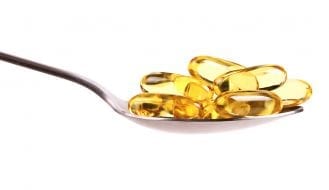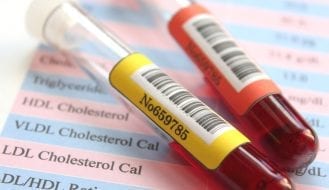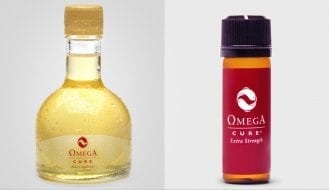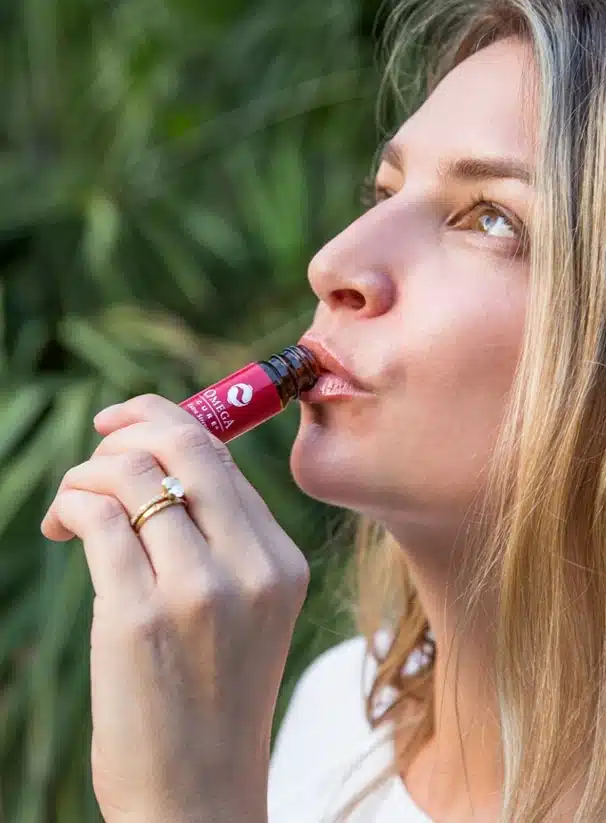Detoxing Heavy Metals In Kids: 4 Effective Tips
Heavy metals are an unseen threat that can harm children’s health in ways we might not immediately notice—impacting their learning, behavior, and even physical development.
While it’s impossible to avoid all exposure, you can take meaningful steps to limit risks. With these four tips, you can take charge of your child’s health and well-being.
The Dangers of Heavy Metal Toxicity In Kids

Some of the most serious consequences of heavy metal exposure in kids include:
- Neurocognitive Disorders: Exposure to metals like lead and mercury can interfere with brain development, leading to learning disabilities, memory problems, and lower IQ (1).
- Behavioral Disorders: Heavy metals have been linked to conditions like ADHD, aggression, and difficulty regulating emotions (1).
- Respiratory Problems: Inhalation of toxic metals, such as chromium or cadmium, can damage developing lungs and lead to chronic respiratory issues (1).
- Cancer Risks: Long-term exposure to certain metals increases the risk of developing cancers later in life (1).
- Cardiovascular Diseases: Metals like lead and cadmium can harm cardiovascular health, increasing the risk of heart-related problems even in childhood (1).
Common Sources of Heavy Metal Exposure
Heavy metal exposure can sound alarming, but for most families in the United States, it’s rare and manageable with proper precautions. Heavy metals like lead, mercury, arsenic, and cadmium are the ones most often linked to toxicity (2). They can sneak into our environment through several sources:
- Industrial Exposure and Pollution: Factories, mining operations, and waste disposal sites can release heavy metals into the air, water, and soil.
- Household Items and Paints: Lead exposure from lead-based paints in older homes remains a concern, particularly if the paint is chipped or peeling. Improperly coated food containers may also leach metals.
- Foods: For kids, rice, grains, sweet potatoes, and other plants grown in contaminated soil are the most common culprits (3).
- Water: In some areas, aging pipes or industrial runoff can introduce heavy metals like lead or arsenic into drinking water.
- Medicines and Supplements: Low-quality supplements or traditional remedies from unregulated sources may contain unsafe levels of heavy metals.
In the U.S., the risk of significant exposure to these harmful substances remains low. Globally, heavy metal exposure tends to be a bigger issue in low- and middle-income countries due to less stringent environmental regulations and oversight (4, 5).
Symptoms of Heavy Metal Poisoning in Children

Recognizing heavy metal poisoning in children can be challenging because the symptoms often overlap with other, more common health issues (6). Here’s a breakdown of potential signs to watch for:
General Symptoms
- Abdominal pain
- Chills or low body temperature
- Dehydration
- Diarrhea
- Feeling weak or fatigued
- Nausea or vomiting
- Scratchy feeling in the throat
- Numbness or a prickly sensation in the hands and feet
Life-Threatening Symptoms
In rare and severe cases, heavy metal poisoning can lead to:
- Abnormal heartbeat (arrhythmia)
- Anemia
- Brain damage and memory loss
- Difficulty breathing
- Kidney or liver damage
Symptoms Specific to Children
Heavy metals can have unique and profound effects on children, including:
- Behavioral disorders
- Difficulty learning or concentrating
- Aggressive behaviors (especially in adolescents) (6)
When to Consider Testing
Diagnosing heavy metal poisoning relies on two key factors:
- A known exposure to heavy metals (e.g., living in a home with lead-based paint or consuming contaminated water).
- Positive test results for specific metals using approved medical tests such as urine testing.
Routine testing for heavy metal poisoning is not recommended unless a healthcare provider determines there’s a valid reason.

How to Do a Heavy Metal Detox for Kids
Helping your child avoid heavy metals doesn’t just help if heavy metal exposure is a concern—it’s also a great way to promote overall health and wellness. The following tips can benefit your child’s well-being while minimizing the risks associated with environmental toxins.
1. Focus on a Healthy, Balanced Diet
What your child eats can significantly impact their exposure to heavy metals. Research from Healthy Babies Bright Futures (HBBF) found toxic heavy metals like arsenic, lead, cadmium, and mercury in 95% of baby food containers tested (7).
To limit exposure, consider making your own baby food using fresh, organic ingredients. Home-prepared meals allow you to avoid potential contaminants from processed foods and prioritize nutrient-rich options.
- Incorporate essential nutrients: Fresh foods rich in vitamin C, calcium, and iron can help reduce heavy metal absorption. These nutrients work by competing with heavy metals during digestion, making them less likely to enter the bloodstream (8).
- Add protective foods: Certain plants like garlic, onions, and berries may support detoxification due to their antioxidant and anti-inflammatory properties (9).
- Diversify protein sources: Include a variety of protein-rich foods, such as beans, lentils, eggs, fatty fish and lean meats, to ensure your child gets all the building blocks they need for growth and repair.
- Regular meals: Eating 4 – 6 small, healthy meals helps regulate nutrient intake and may reduce lead absorption in the body (8).
2. Ensure Proper Hydration
Staying hydrated is one of the simplest ways to support your child’s overall health and naturally detox. While there isn’t extensive research proving hydration directly reduces heavy metal toxicity, proper hydration is essential for kidney function and helps the body naturally eliminate toxins through urine (10).
Tips to Keep Kids Hydrated:
- Make water fun: Infuse it with slices of fruit like strawberries, oranges, or cucumbers for added flavor and a splash of color.
- Send water to school: Pack a water bottle in their bag and remind them to drink regularly during the day.
- Use a water-drinking schedule: Encourage water breaks at set times, such as after waking up, during meals, and after playing outside.
Opt for Reusable, Non-Plastic Bottles
Choose a reusable water bottle made from stainless steel or glass instead of plastic. Many plastic bottles can leach chemicals like BPA, especially when exposed to heat or wear and tear (11). Stainless steel and glass options are durable, easy to clean, and safer for your child’s long-term health.
3. Consider Dietary Supplements

Specific vitamins and minerals, like zinc, iron, and vitamin C, have shown the potential to reduce the absorption and toxicity of heavy metals like cadmium and lead (12).
Minerals that Help Combat Heavy Metals
- Zinc: Zinc is one of the most well-researched minerals for reducing heavy metal toxicity. Because zinc shares similar chemical properties with cadmium and lead, it competes with these metals for binding sites in the body. This competition reduces the absorption of toxic metals. Zinc also stimulates the production of metallothionein, a protein that binds to harmful metals like cadmium and promotes detoxification (12).
- Iron: Iron supplementation can decrease cadmium absorption by competing for intestinal metal transporters (12). These transporters preferentially absorb essential minerals when levels are adequate, leaving less opportunity for harmful metals to be absorbed.
Vitamins for Antioxidant and Chelating Support
- Vitamin C: Known for its powerful antioxidant properties, vitamin C may also act as a chelating agent for lead, binding to the metal and reducing its harmful effects. While studies in humans have been mixed, this vitamin remains essential for overall detoxification and immune support (12).
- Vitamins E, B1, and B6: These vitamins support the body’s antioxidant defenses, reducing oxidative stress caused by heavy metals and improving cellular health (12).
Omega-3 Fatty Acids for Protection Against Oxidative Damage
Omega-3s, such as EPA and DHA, are vital for protecting the liver from oxidative damage (13) caused by environmental toxins. Emerging research also shows that omega-3s can mitigate the harmful effects of air pollution (14), a potential source of heavy metal exposure.
Fish is a good source of omega-3s, but certain species can also contain high levels of heavy metals. In contrast, high-quality fish oil supplements are purified to remove mercury, lead and other contaminants (15), making them a safe and effective option for kids.
4. Replace Unsafe Toys & Household Products
Children’s toys and household products can sometimes harbor heavy metals like arsenic, cadmium, lead, and mercury. While regulations have improved in many countries, cheaply made or imported items may still pose risks (16).
Taking proactive steps to ensure the safety of the items in your home can reduce exposure and support your child’s health.
Choose Safer Toys
Avoid inexpensive, plastic toys, especially those with bright paints or metallic finishes, as they may contain harmful metals like lead, chromium, or cadmium. Instead, look for toys made from safer materials, such as organic cotton, real wood, or food-grade silicone or stainless steel.
When shopping, check for labels indicating that the toy complies with safety standards, such as ASTM International or European EN71 standards.
Rethink Cleaning Products
Household cleaning products can be another hidden source of toxins. Many conventional cleaners contain harsh chemicals that leave residues on surfaces, increasing your child’s exposure. To reduce risk, you can switch to natural alternatives like baking soda, vinegar, or eco-friendly cleaning brands.
Should You Consider Chelation Therapy?
Chelation therapy is a medical treatment designed to remove heavy metals from the body by binding them to a chelating agent, which is then excreted through urine. While this therapy can be effective for treating severe heavy metal poisoning (17), it is not without risks and should only be considered under the direct supervision of medical professionals.
Why Chelation Therapy Can Be Dangerous
Using chelation therapy outside of its intended purpose—or without medical guidance—can lead to serious complications (18), including:
- Nutrient deficiencies: Chelating agents don’t distinguish between toxic metals and essential nutrients like calcium, magnesium, or iron, potentially leaving your body depleted.
- Kidney strain: Processing chelating agents can overburden your kidneys, increasing the risk of kidney damage or failure.
- Fatal risks: Incorrect use of chelation therapy has been linked to life-threatening complications, including cardiac arrest and severe imbalances in electrolytes.
For these reasons, chelation therapy should never be undertaken without clear medical necessity.
Should You Do a Heavy Metal Detox for Kids?
If you suspect heavy metal toxicity in your child, consult a healthcare professional. Proper testing and expert guidance are essential before considering any heavy metal detoxification treatments.
At home, focus on prevention and healthy habits. Offer a nutrient-rich diet, encourage proper hydration, and replace unsafe products like plastic toys and harsh cleaning chemicals with safer alternatives. These proactive steps support overall health and minimize potential health concerns.
While heavy metal exposure is rare in the U.S., staying vigilant and prioritizing prevention can help protect your child’s well-being. If you have concerns, reach out to a trusted healthcare provider.
Popular posts



Related posts






